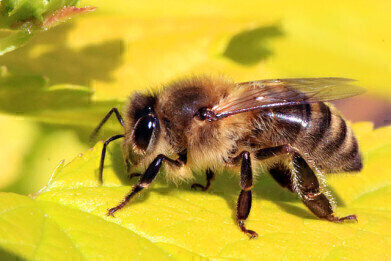GC, MDGC
Turn off the Diesel and Smell the Flowers
Aug 21 2015
Bees are a vital component in the food chain with around 70% of the world’s food crops relying on pollination. Reports in recent years suggest a decline in bee populations with whole beehives dying out — the problem known as Colony Collapse Disorder (CCD).
There are many factors suspected of contributing to CCD including pests, pesticides and nutritional deficiencies. Another element that might be involved is atmospheric pollution. The effects of air pollution, specifically diesel exhaust fumes, on honey bees has been reported in an article at Nature.com, ‘Diesel exhaust rapidly degrades floral odours used by honeybees’.
Listen to the plants
Bees, like many other insects, use chemical odours to signal and communicate, and — perhaps surprisingly — so do plants. To increase its chances of getting pollinated a plant might release chemical odours so it can attract pollinators. A team from the University of Southampton studied the effect of diesel exhaust fumes on a bee’s ability to recognise an odour developed to mimic the scent from oilseed rape; grown in the UK as a source of vegetable oil for cooking and for biodiesel.
A synthetic mix — containing the eight main odour components from oilseed rape that bees respond to — was released into glass vessels with clean air added to one as a control. The researchers added diesel exhaust gases and various mixes of mono-nitric oxides — nitric oxide (NO) and nitrogen dioxide (NO2) — to the other vessels.
The vessels were sampled periodically over a two hour period, with the samples analysed using gas chromatography linked to a mass spectrometer. GC-MS can be used to analyse the volatiles in a gaseous mixture as discussed in this article, Volatile Organic Compound Determination in Health-related Research: A Review.
The diesel mix and the nitric oxides both had an effect on the synthetic floral mix, in particular the components α-farnesene and α-terpinene which were rendered undetectable in the diesel exhaust mix. In the mono-nitric oxide vessel having 0.1 ppm concentrations of NO and NO2 — a value used for the permitted NO2 levels in Europe and the US — four of the eight odour components were significantly reduced.
Let the bees smell the flowers
The researchers compared honey bee reactions to the complete floral mix and three other mixes missing either α-farnesene, α-terpinene or both α-farnesene and α-terpinene. They found that removal of a minor component — α-terpinene (0.8% in the mix) — resulted in the bees being unable to recognise the synthetic oilseed rape scent.
The loss of odour communication between pollinators and plants could have a significant economic and ecological impact. Although the researchers used synthetic odours, the research suggests that atmospheric pollutants can impact bees and their ability to forage — thus affecting their overall health.
Image By Charlesjsharp [CC BY-SA 3.0 (http://creativecommons.org/licenses/by-sa/3.0)], via Wikimedia Commons
Digital Edition
Chromatography Today - Buyers' Guide 2022
October 2023
In This Edition Modern & Practical Applications - Accelerating ADC Development with Mass Spectrometry - Implementing High-Resolution Ion Mobility into Peptide Mapping Workflows Chromatogr...
View all digital editions
Events
ACS National Meeting - Fall 2024
Aug 18 2024 Denver, CO, USA
Sep 04 2024 Chiba, Tokyo, Japan
Sep 04 2024 University of Warwick, Coventry, UK
Sep 10 2024 Rockville, MD, USA
Plastics Recycling World Expo Europe
Sep 11 2024 Brussels, Belgium














